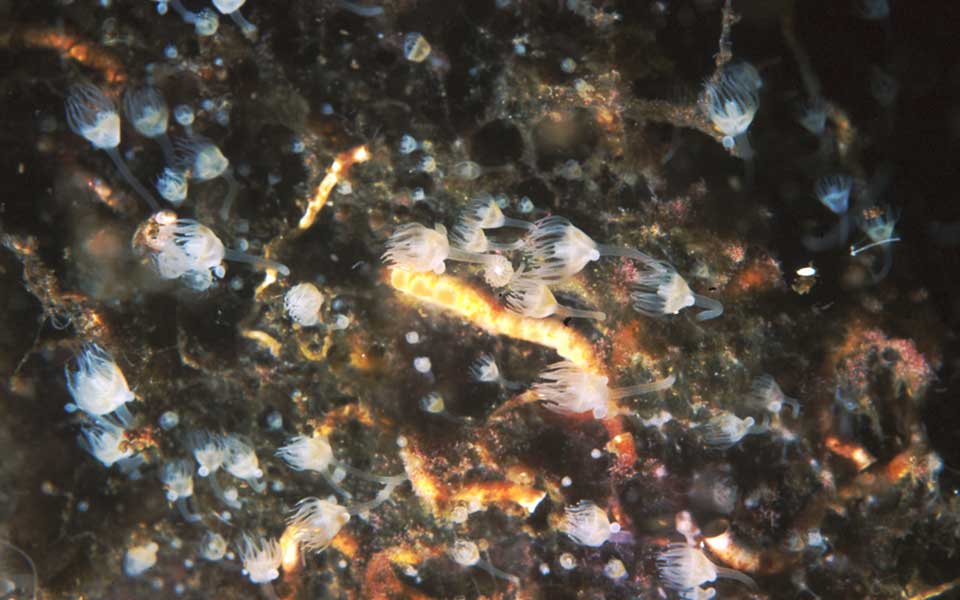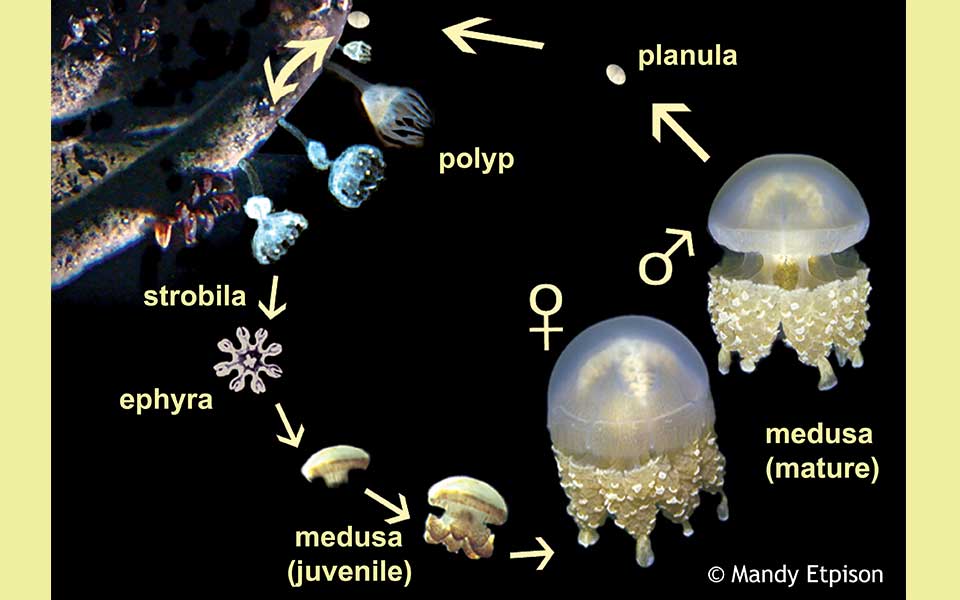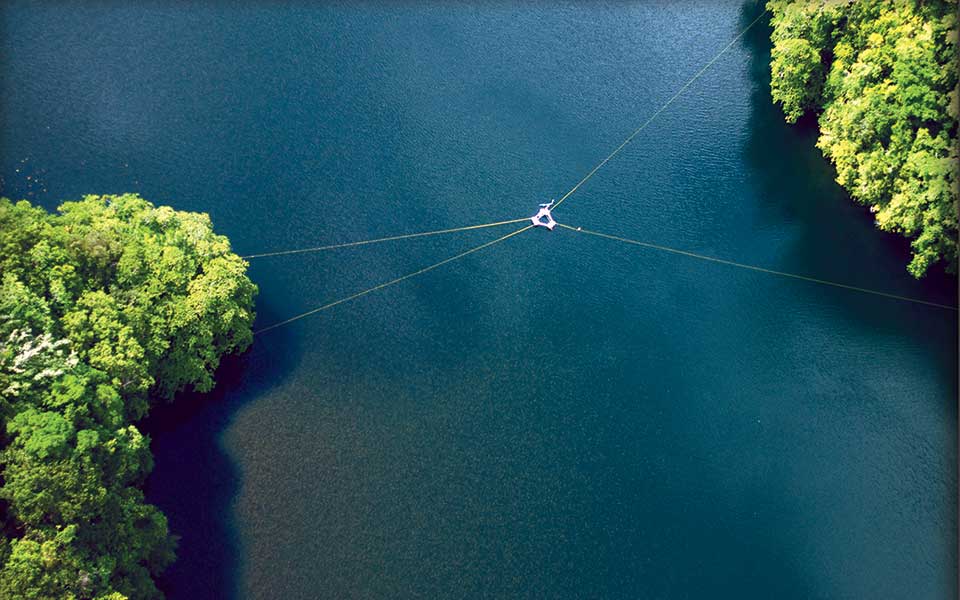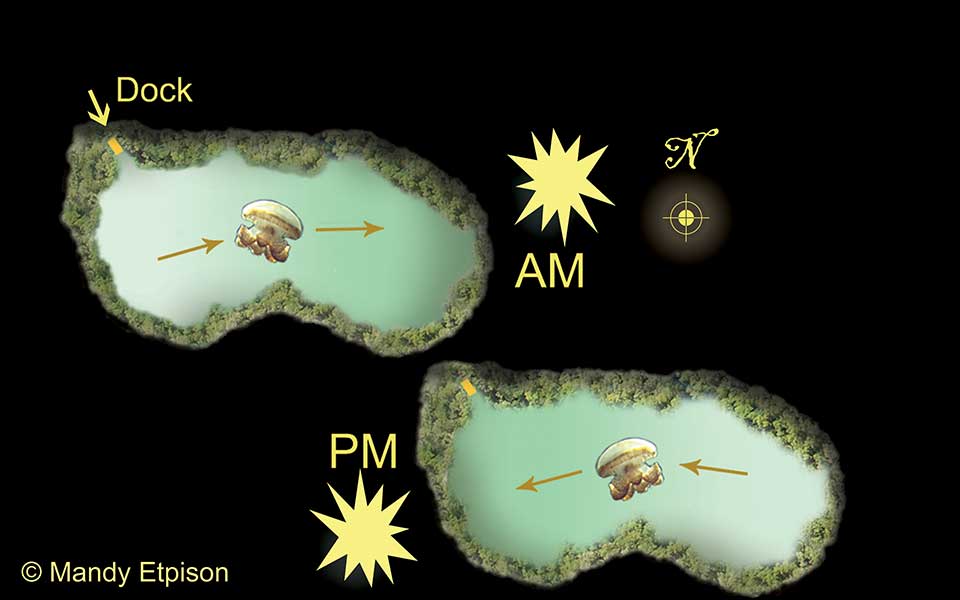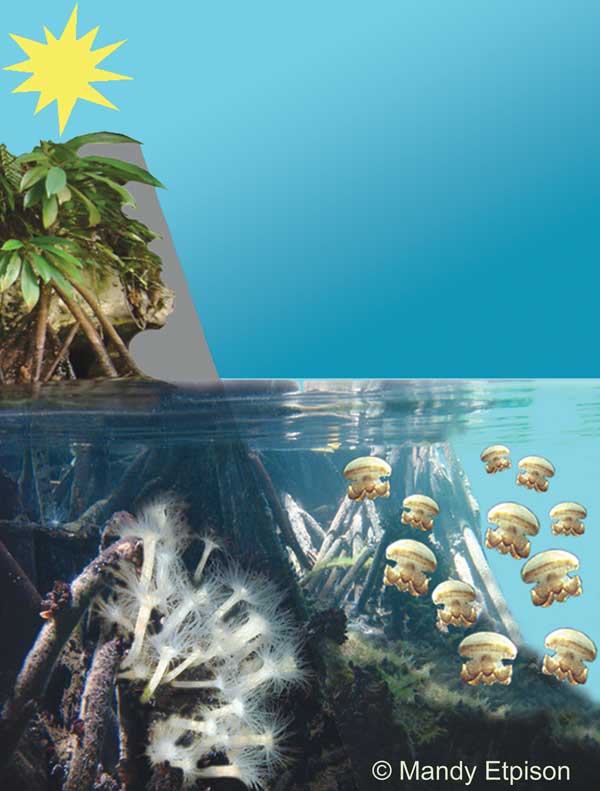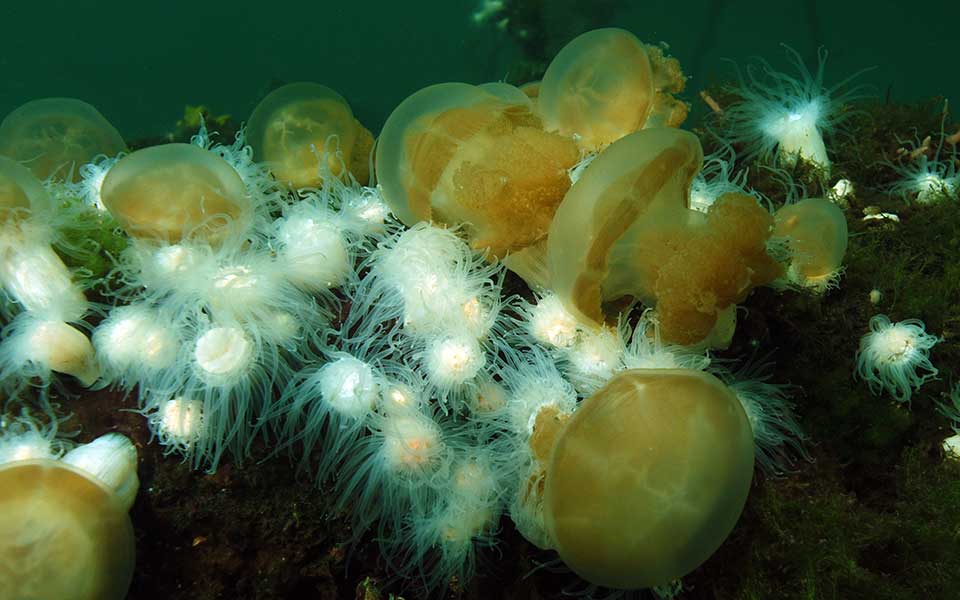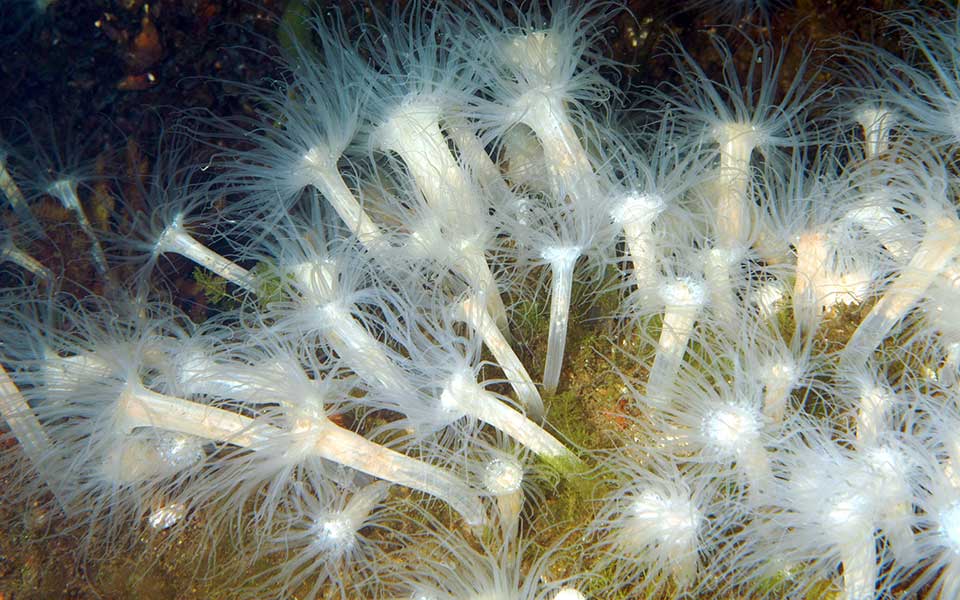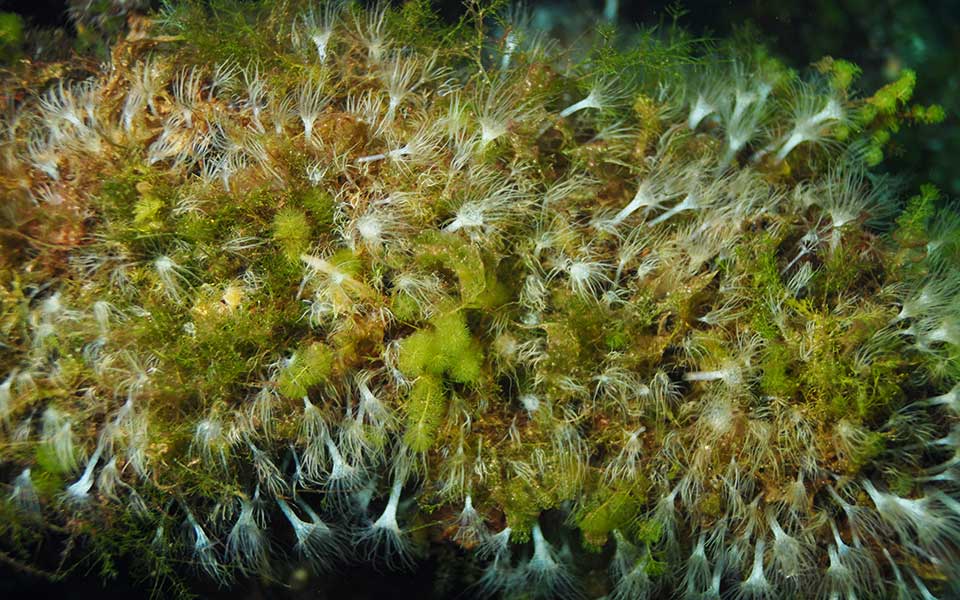The millions of golden jellyfish found in Jellyfish Lake are a unique subspecies, Mastigias papua etpisoni, named after former President Ngiratkel Etpison. This subspecies is found only in this marine lake, and nowhere else in the world.
Jellyfish Lake is one of the isolated, stratified (meromictic) marine lakes. The lake’s edge is lined with mangrove trees and their roots are covered with a colorful assortment of marine invertebrates. Jellyfish Lake is 400 m long and 30 m deep. Between 13-15 m, there is a pink layer of bacteria and below that, there is no light and no oxygen. The bottom water layer is filled with poisonous dissolved hydrogen sulfide gas. The lake has numerous indirect connections to the lagoon and the tidal rise and fall is delayed by two hours (compared to the lagoon). The tidal range is 45% of that in the lagoon (2 m), or about 0.8 m.
The golden jellyfish have zooxanthellae, symbiotic algae (dinoflagellates), living in their tissues. The jellyfish and algae have a special and beneficial relationship. The jellyfish rotates and swims around the lake to ensure that the algae get enough sunlight for photosynthesis, and the algae gives the jellyfish some energy and nutrients in return. There are typically about 5 million golden jellyfish in the lake.





